Experimental Analysis on a Commercial Power Electronic Converter in Power-to-Hydrogen System Based on PEM Electrolysis and Metal Hydrides
Abstract
1. Introduction
2. System Description
- The electrolyzer—In more detail, the considered electrolyzer internally comprises the stack, all the auxiliaries required for its proper functioning, the programmable logic controller (PLC) for control, and the power supply. These form the electrolyzer balance of plant (BoP). A more detailed diagram of the BoP is shown in Figure 2.
- The hydrogen storage system—In this case, an MH-based storage system is considered. MHs are classified according to the materials of which the metal alloy is composed. This study specifically considers interstitial MHs. These hydrides are typically non-stoichiometric compounds in which hydrogen is incorporated into the crystal lattice of a metal or metal alloy. The abbreviations AB, AB2, and AB5 indicate the predominant elements in the base alloy and provide an approximate representation of their relative proportions. These hydrides generally function within a temperature range of to and exhibit storage capacities of approximately 2% by weight, depending on the alloy composition [37,38]. However, it is necessary to consider that the rate of hydrogen adsorption depends on the chemical kinetics of the metal hydride considered and the relative conditions of the system in which it is placed. In the considered system, the storage consists of two AB2-type MH canisters based on TiMg alloy.
- The cooling system—Since the adsorption phase is an exothermic reaction, the storage system is integrated with a thermal conditioning system used to cool down the MH canisters during the charging phase. This is a water-based cooling circuit consisting of a centrifugal water pump, a thermal buffer tank, and a self-built water-bath heat exchanger.
- The data acquisition and control (DAQ) system—This part is developed in the MATLAB environment and based on Arduino hardware, which is able to communicate with the electrolyzer PLC. The acquisition of the voltage and current waveforms is made using oscilloscopes. The system has also been equipped with transducers and sensors to monitor the main thermodynamic and electric quantities, similarly to other articles [39].
3. Methodology
4. Experimental Setup
5. Results and Discussions
6. Conclusions
Author Contributions
Funding
Data Availability Statement
Conflicts of Interest
Abbreviations
| IEA | International Energy Agency |
| PEM | Proton exchange membrane |
| SOC | Solid oxide cell |
| MH | Metal hydride |
| RES | Renewable energy source |
| P2G | Power-to-gas |
| DAQ | Data acquisition and control |
| PLC | Programmable logic controller |
| BoP | Balance of plant |
| AC | Alternate current |
| DC | Direct current |
| LHV | Low heating value |
| HHV | High heating value |
| FFT | Fast Fourier transform |
| TC | Thermocouple |
| p.u. | Per unit |
References
- Houghton, J. Global warming. Rep. Prog. Phys. 2005, 68, 1343. [Google Scholar] [CrossRef]
- Farias, C.B.B.; Barreiros, R.C.S.; da Silva, M.F.; Casazza, A.A.; Converti, A.; Sarubbo, L.A. Use of hydrogen as fuel: A trend of the 21st century. Energies 2022, 15, 311. [Google Scholar] [CrossRef]
- Van Hoecke, L.; Laffineur, L.; Campe, R.; Perreault, P.; Verbruggen, S.W.; Lenaerts, S. Challenges in the use of hydrogen for maritime applications. Energy Environ. Sci. 2021, 14, 815–843. [Google Scholar] [CrossRef]
- IEA. Global Hydrogen Review 2024. Available online: https://www.iea.org/reports/global-hydrogen-review-2024 (accessed on 27 January 2025).
- Mohammadi, A.; Mehrpooya, M. A comprehensive review on coupling different types of electrolyzer to renewable energy sources. Energy 2018, 158, 632–655. [Google Scholar] [CrossRef]
- Dawood, F.; Anda, M.; Shafiullah, G. Hydrogen production for energy: An overview. Int. J. Hydrogen Energy 2020, 45, 3847–3869. [Google Scholar] [CrossRef]
- Ilyushin, Y.V.; Boronko, E.A. Analysis of Energy Sustainability and Problems of Technological Process of Primary Aluminum Production. Energies 2025, 18, 2194. [Google Scholar] [CrossRef]
- Nejadian, M.M.; Ahmadi, P.; Houshfar, E. Comparative optimization study of three novel integrated hydrogen production systems with SOEC, PEM, and alkaline electrolyzer. Fuel 2023, 336, 126835. [Google Scholar] [CrossRef]
- Benghanem, M.; Almohamadi, H.; Haddad, S.; Mellit, A.; Chettibi, N. The effect of voltage and electrode types on hydrogen production powered by photovoltaic system using alkaline and PEM electrolyzers. Int. J. Hydrogen Energy 2024, 57, 625–636. [Google Scholar] [CrossRef]
- Sayed-Ahmed, H.; Toldy, Á.I.; Santasalo-Aarnio, A. Dynamic operation of proton exchange membrane electrolyzers—Critical review. Renew. Sustain. Energy Rev. 2024, 189, 113883. [Google Scholar] [CrossRef]
- Hydrogen Europe. Clean Hydrogen Production Pathways Report 2024. Available online: https://www.keei.re.kr/library/10110/contents/6883588 (accessed on 27 January 2025).
- Elberry, A.M.; Thakur, J.; Santasalo-Aarnio, A.; Larmi, M. Large-scale compressed hydrogen storage as part of renewable electricity storage systems. Int. J. Hydrogen Energy 2021, 46, 15671–15690. [Google Scholar] [CrossRef]
- Ghaffari-Tabrizi, F.; Haemisch, J.; Lindner, D. Reducing hydrogen boil-off losses during fuelling by pre-cooling cryogenic tank. Hydrogen 2022, 3, 255–269. [Google Scholar] [CrossRef]
- Zhang, T.; Uratani, J.; Huang, Y.; Xu, L.; Griffiths, S.; Ding, Y. Hydrogen liquefaction and storage: Recent progress and perspectives. Renew. Sustain. Energy Rev. 2023, 176, 113204. [Google Scholar] [CrossRef]
- Klopčič, N.; Grimmer, I.; Winkler, F.; Sartory, M.; Trattner, A. A review on metal hydride materials for hydrogen storage. J. Energy Storage 2023, 72, 108456. [Google Scholar] [CrossRef]
- Førde, T. Theoretical and Experimental Studies of Metal Hybride Storage Units. Ph.D. Thesis, Norwegian University of Science and Technology, Trondheim, Norway, 2007. [Google Scholar]
- Nivedhitha, K.; Beena, T.; Banapurmath, N.; Umarfarooq, M.; Ramasamy, V.; Soudagar, M.E.M.; Ağbulut, Ü. Advances in hydrogen storage with metal hydrides: Mechanisms, materials, and challenges. Int. J. Hydrogen Energy 2024, 61, 1259–1273. [Google Scholar] [CrossRef]
- Nguyen, E.; Olivier, P.; Péra, M.C.; Pahon, E.; Roche, R.; Lefranc, O.; Claudel, F. Impact of short-term intermittent operation on experimental industrial PEM and alkaline electrolyzers. Int. J. Hydrogen Energy 2025, 126, 516–530. [Google Scholar] [CrossRef]
- Marangio, F.; Santarelli, M.; Calì, M. Theoretical model and experimental analysis of a high pressure PEM water electrolyser for hydrogen production. Int. J. Hydrogen Energy 2009, 34, 1143–1158. [Google Scholar] [CrossRef]
- Guilbert, D.; Vitale, G. Experimental validation of an equivalent dynamic electrical model for a proton exchange membrane electrolyzer. In Proceedings of the 2018 IEEE International Conference on Environment and Electrical Engineering and 2018 IEEE Industrial and Commercial Power Systems Europe (EEEIC/I&CPS Europe), Palermo, Italy, 12–15 June 2018; pp. 1–6. [Google Scholar]
- Arriaga, L.; Martinez, W.; Cano, U.; Blud, H. Direct coupling of a solar-hydrogen system in Mexico. Int. J. Hydrogen Energy 2007, 32, 2247–2252. [Google Scholar] [CrossRef]
- Clarke, R.; Giddey, S.; Ciacchi, F.; Badwal, S.; Paul, B.; Andrews, J. Direct coupling of an electrolyser to a solar PV system for generating hydrogen. Int. J. Hydrogen Energy 2009, 34, 2531–2542. [Google Scholar] [CrossRef]
- Di Caro, A.; Vitale, G. Direct-Coupled Improvement of a Solar-Powered Proton Exchange Membrane Electrolyzer by a Reconfigurable Source. Clean Technol. 2024, 6, 1203–1228. [Google Scholar] [CrossRef]
- Chen, M.; Chou, S.F.; Blaabjerg, F.; Davari, P. Overview of power electronic converter topologies enabling large-scale hydrogen production via water electrolysis. Appl. Sci. 2022, 12, 1906. [Google Scholar] [CrossRef]
- Guilbert, D.; Collura, S.M.; Scipioni, A. DC/DC converter topologies for electrolyzers: State-of-the-art and remaining key issues. Int. J. Hydrogen Energy 2017, 42, 23966–23985. [Google Scholar] [CrossRef]
- Pahon, E.; Péra, M.C.; Bouquain, D.; Hissel, D. Impact of current ripples on the durability of proton exchange membrane fuel cells based on two ageing datasets. Data Brief 2022, 45, 108601. [Google Scholar] [CrossRef] [PubMed]
- Parache, F.; Schneider, H.; Turpin, C.; Richet, N.; Debellemanière, O.; Bru, É.; Thieu, A.T.; Bertail, C.; Marot, C. Impact of power converter current ripple on the degradation of PEM electrolyzer performances. Membranes 2022, 12, 109. [Google Scholar] [CrossRef]
- Wahdame, B.; Girardot, L.; Hissel, D.; Harel, F.; François, X.; Candusso, D.; Pera, M.C.; Dumercy, L. Impact of power converter current ripple on the durability of a fuel cell stack. In Proceedings of the 2008 IEEE International Symposium on Industrial Electronics, Cambridge, UK, 30 June–2 July 2008; pp. 1495–1500. [Google Scholar]
- Zhan, Y.; Guo, Y.; Zhu, J.; Li, L. Input current ripple reduction and high efficiency for PEM fuel cell power conditioning system. In Proceedings of the 2017 20th International Conference on Electrical Machines and Systems (ICEMS), Sydney, NSW, Australia, 11–14 August 2017; pp. 1–6. [Google Scholar]
- Kim, J.; Lee, I.; Tak, Y.; Cho, B. Impedance-based diagnosis of polymer electrolyte membrane fuel cell failures associated with a low frequency ripple current. Renew. Energy 2013, 51, 302–309. [Google Scholar] [CrossRef]
- Jarry, T.; Jaafar, A.; Turpin, C.; Lacressonniere, F.; Bru, E.; Rallieres, O.; Scohy, M. Impact of high frequency current ripples on the degradation of high-temperature PEM fuel cells (HT–PEMFC). Int. J. Hydrogen Energy 2023, 48, 20734–20742. [Google Scholar] [CrossRef]
- Zhan, Y.; Guo, Y.; Zhu, J.; Liang, B.; Yang, B. Comprehensive influences measurement and analysis of power converter low frequency current ripple on PEM fuel cell. Int. J. Hydrogen Energy 2019, 44, 31352–31359. [Google Scholar] [CrossRef]
- Buitendach, H.P.; Gouws, R.; Martinson, C.A.; Minnaar, C.; Bessarabov, D. Effect of a ripple current on the efficiency of a PEM electrolyser. Results Eng. 2021, 10, 100216. [Google Scholar] [CrossRef]
- Valdez-Resendiz, J.E.; Rosas-Caro, J.C.; Sanchez, V.M.; Lopez-Nuñez, A.R. Experimental study of a fuel cell stack performance operating with a power electronics converter with high-frequency current ripple. Int. J. Hydrogen Energy 2024, 108, 66–75. [Google Scholar] [CrossRef]
- Gerard, M.; Poirot-Crouvezier, J.P.; Hissel, D.; Péra, M.C. Ripple Current Effects on PEMFC Aging Test by Experimental and Modeling. J. Fuel Cell Sci. Technol. 2010, 8, 021004. [Google Scholar] [CrossRef]
- Guilbert, D.; Sorbera, D.; Vitale, G. A stacked interleaved DC-DC buck converter for proton exchange membrane electrolyzer applications: Design and experimental validation. Int. J. Hydrogen Energy 2020, 45, 64–79. [Google Scholar] [CrossRef]
- Drawer, C.; Lange, J.; Kaltschmitt, M. Metal hydrides for hydrogen storage—Identification and evaluation of stationary and transportation applications. J. Energy Storage 2024, 77, 109988. [Google Scholar] [CrossRef]
- Pasquini, L.; Sakaki, K.; Akiba, E.; Allendorf, M.D.; Alvares, E.; Ares, J.R.; Babai, D.; Baricco, M.; Von Colbe, J.B.; Bereznitsky, M.; et al. Magnesium-and intermetallic alloys-based hydrides for energy storage: Modelling, synthesis and properties. Prog. Energy 2022, 4, 032007. [Google Scholar] [CrossRef]
- Folgado, F.J.; González, I.; Calderón, A.J. Data acquisition and monitoring system framed in Industrial Internet of Things for PEM hydrogen generators. Internet Things 2023, 22, 100795. [Google Scholar] [CrossRef]
- Keddar, M.; Zhang, Z.; Periasamy, C.; Doumbia, M.L. Power quality improvement for 20 MW PEM water electrolysis system. Int. J. Hydrogen Energy 2022, 47, 40184–40195. [Google Scholar] [CrossRef]
- Mohanpurkar, M.; Luo, Y.; Terlip, D.; Dias, F.; Harrison, K.; Eichman, J.; Hovsapian, R.; Kurtz, J. Electrolyzers enhancing flexibility in electric grids. Energies 2017, 10, 1836. [Google Scholar] [CrossRef]
- Drobnic, K.; Grandi, G.; Hammami, M.; Mandrioli, R.; Ricco, M.; Viatkin, A.; Vujacic, M. An output ripple-free fast charger for electric vehicles based on grid–tied modular three-phase interleaved converters. IEEE Trans. Ind. Appl. 2019, 55, 6102–6114. [Google Scholar] [CrossRef]
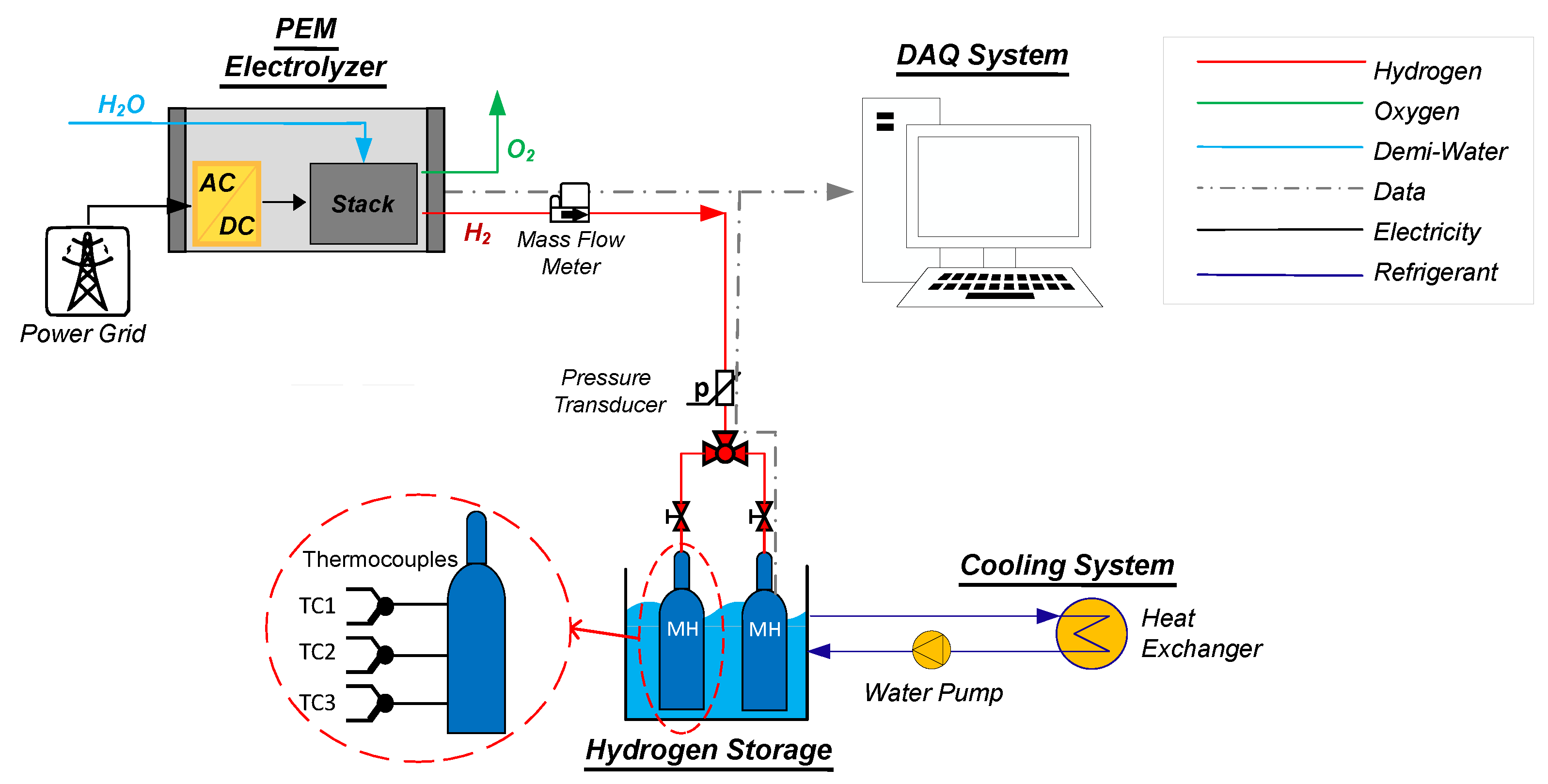
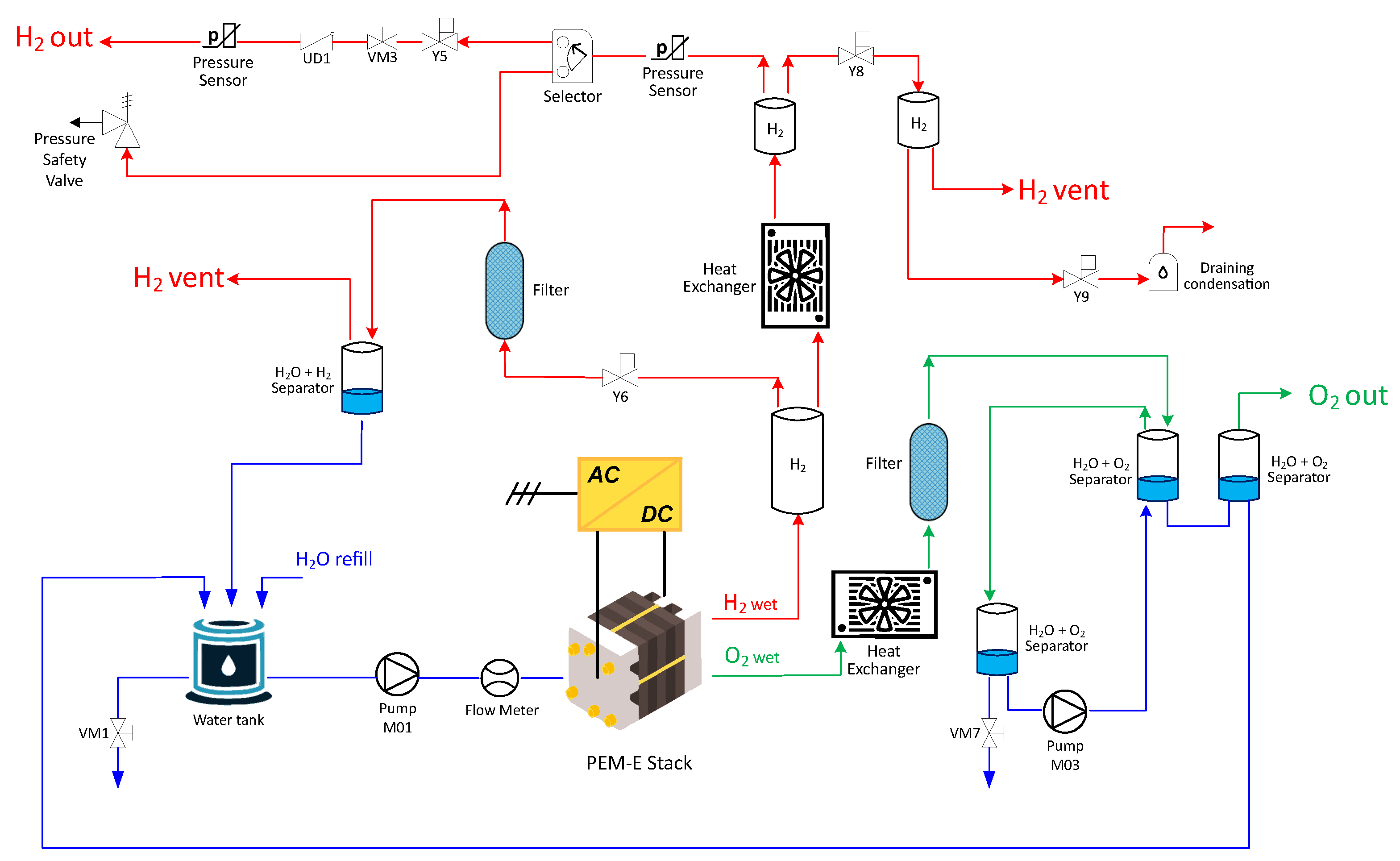
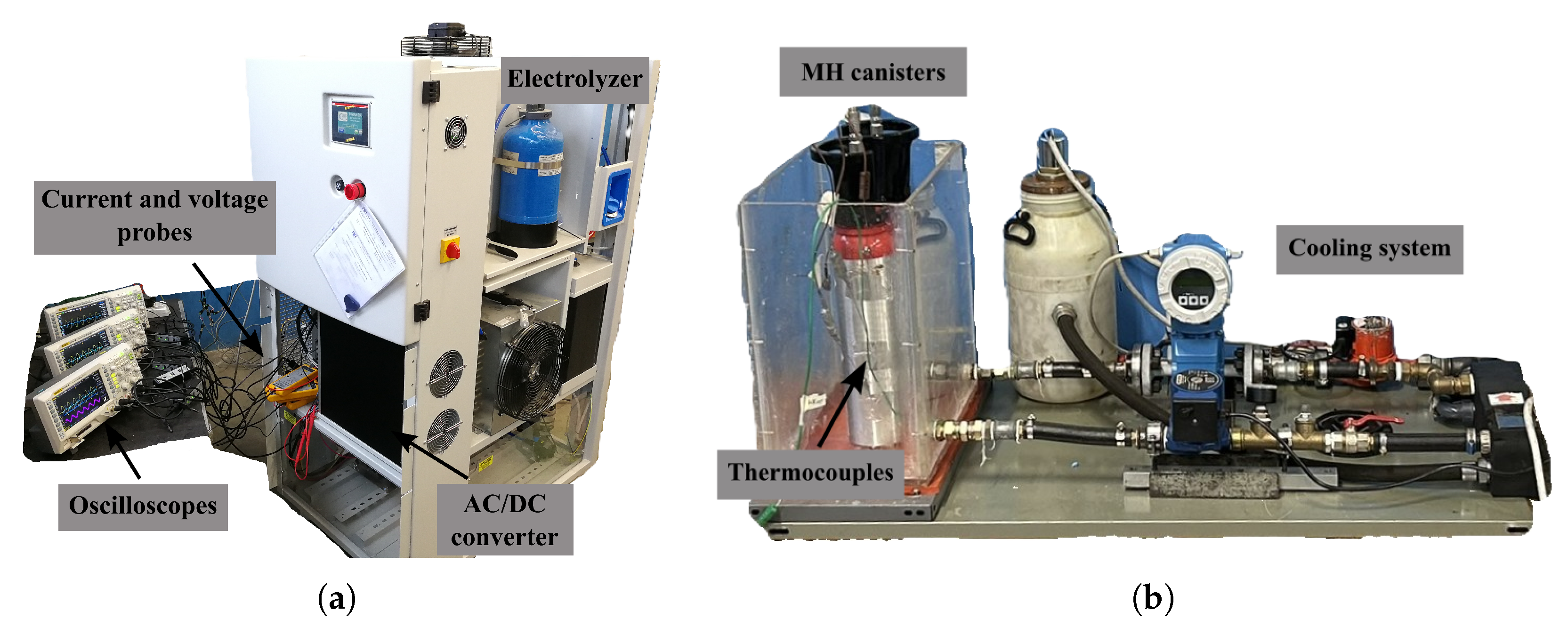
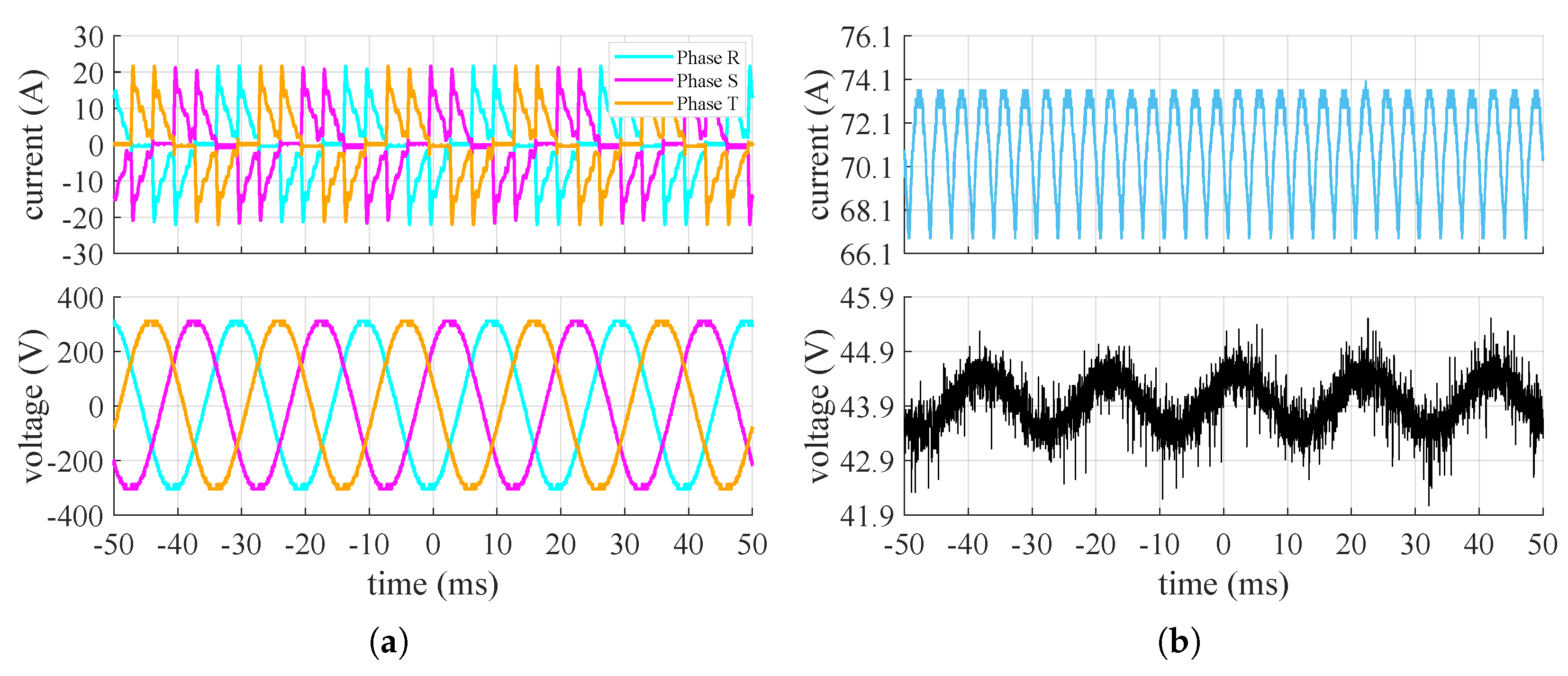
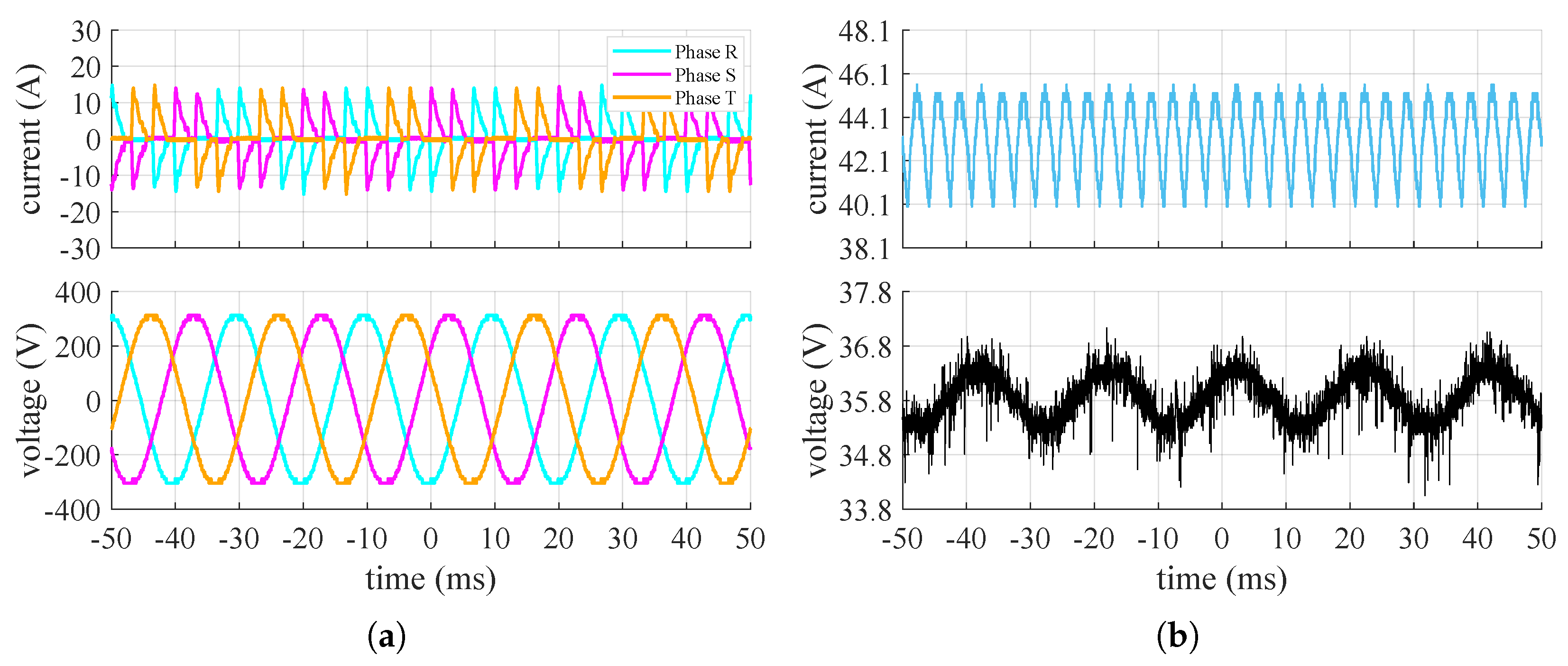
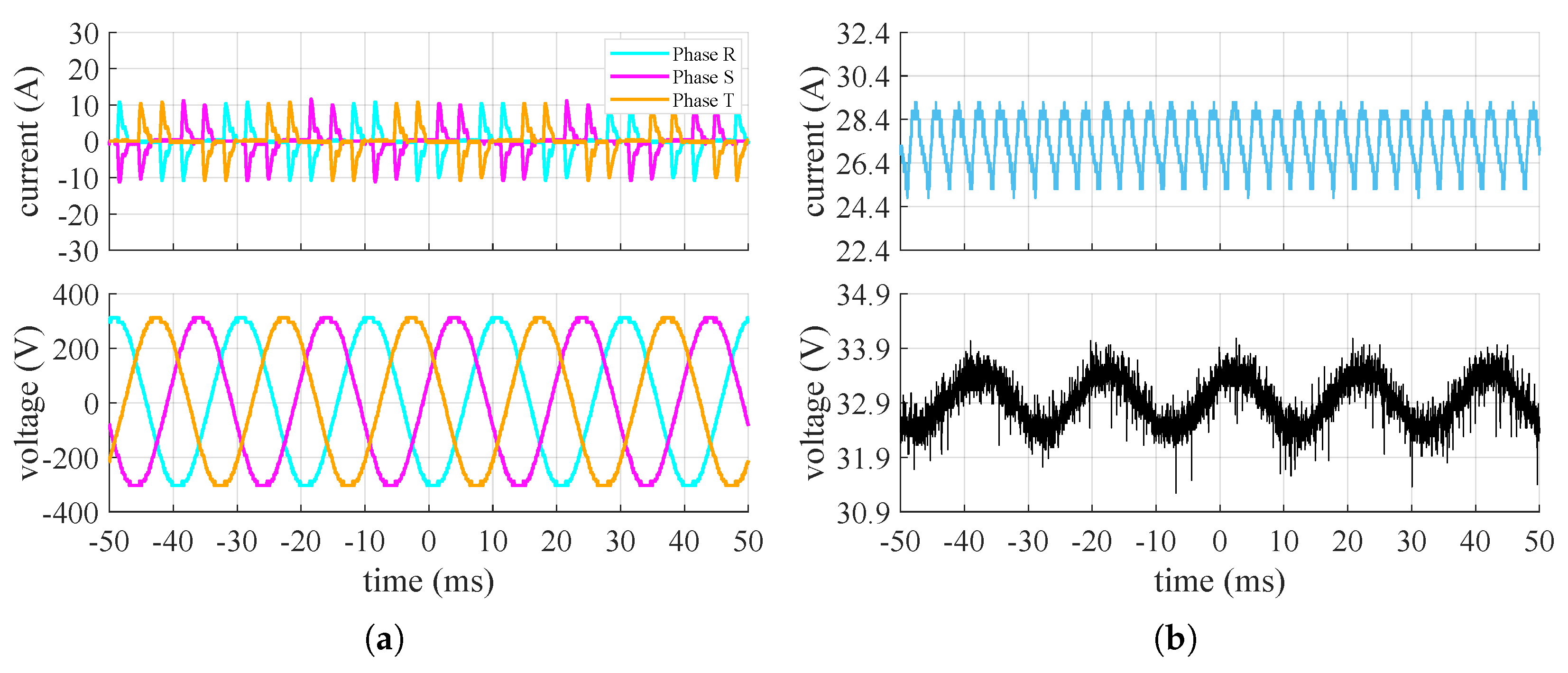

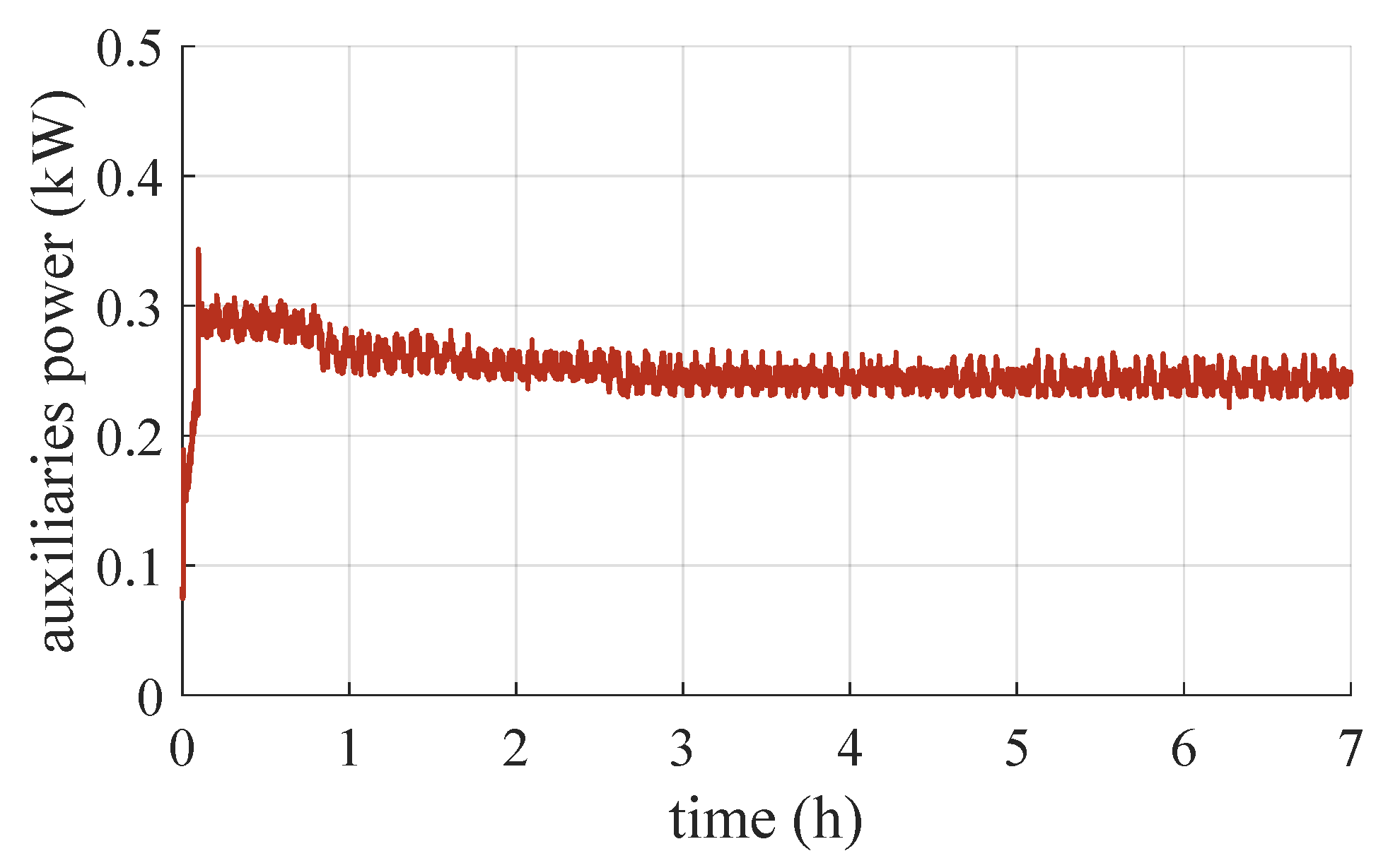
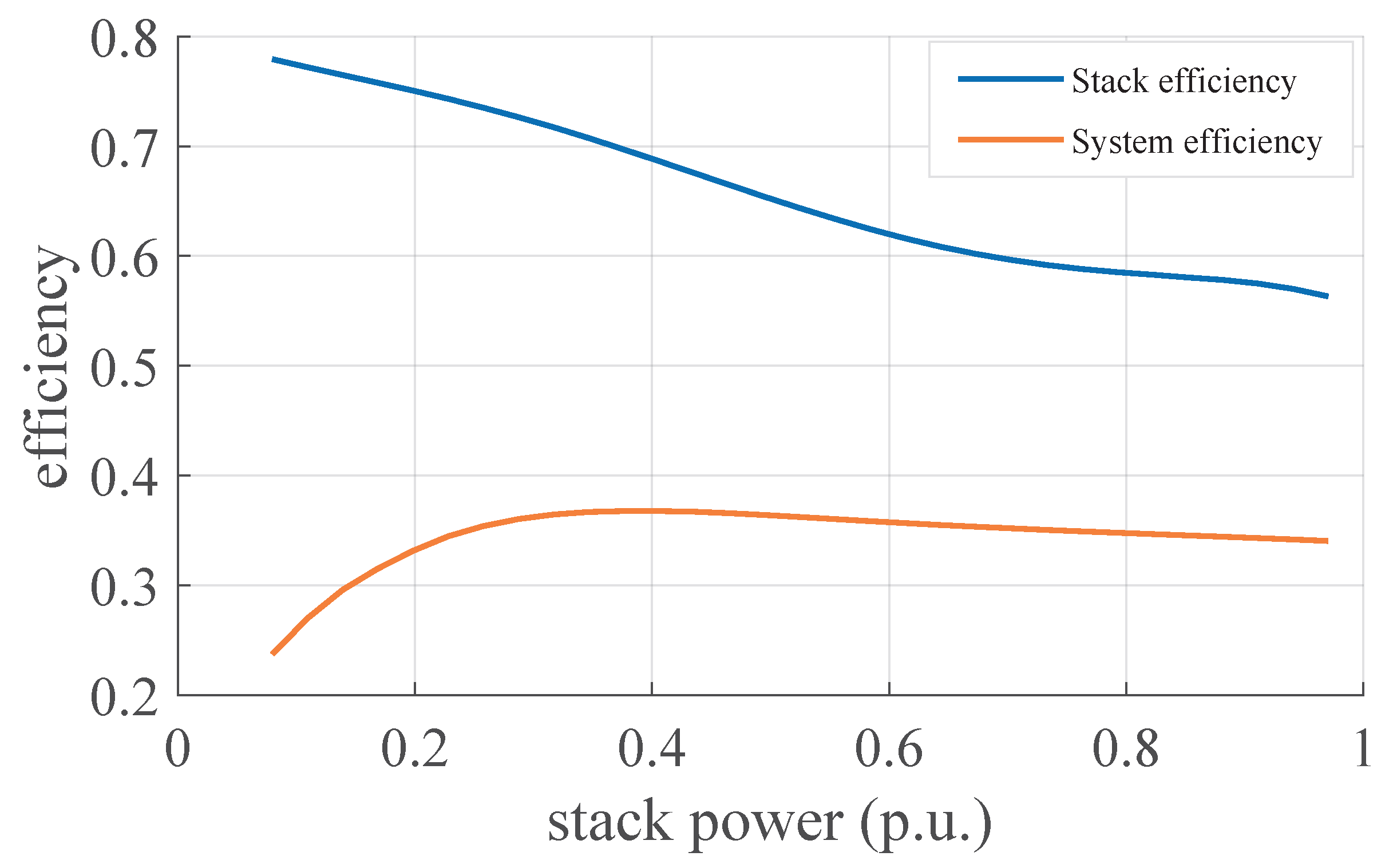
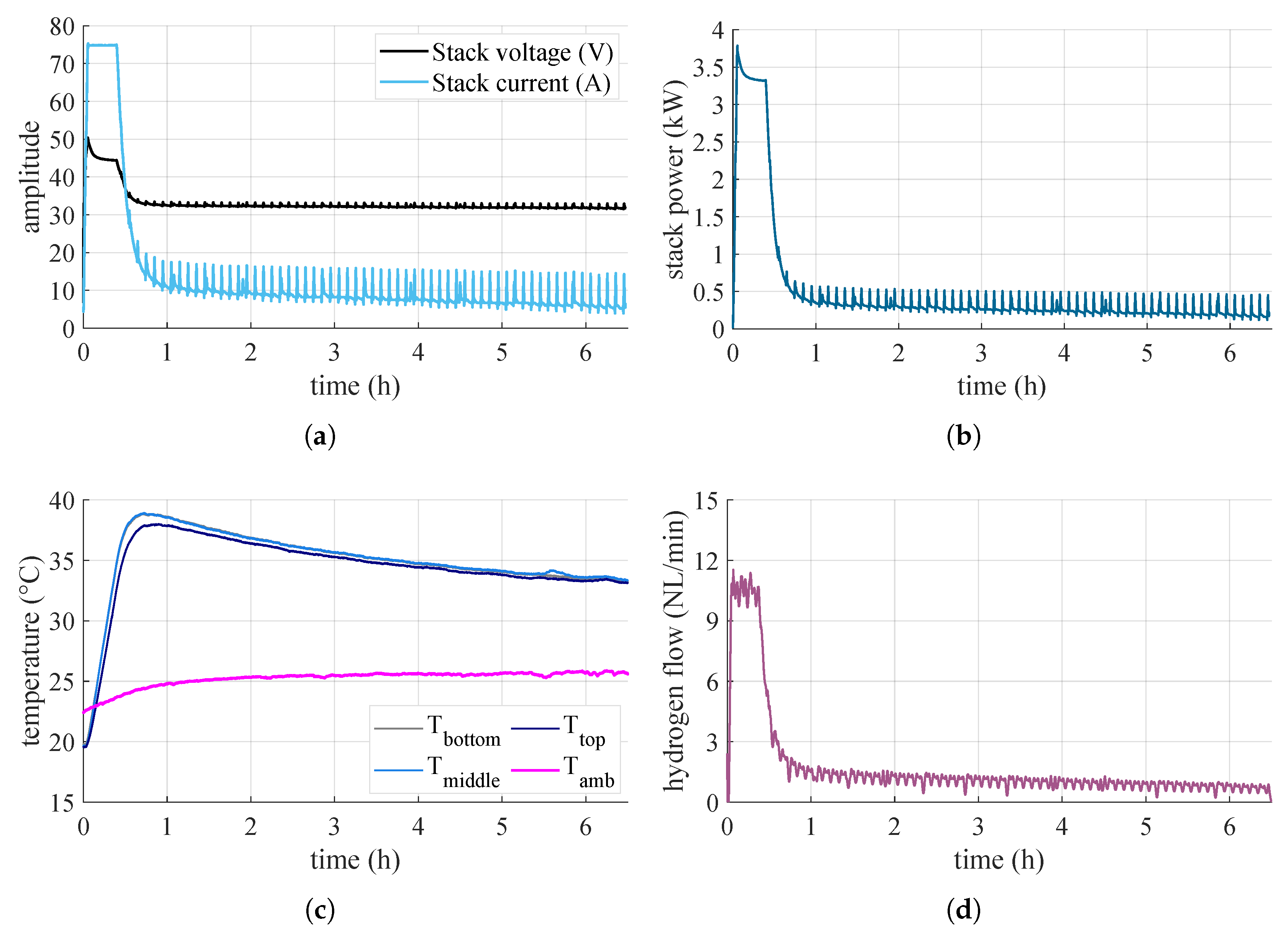
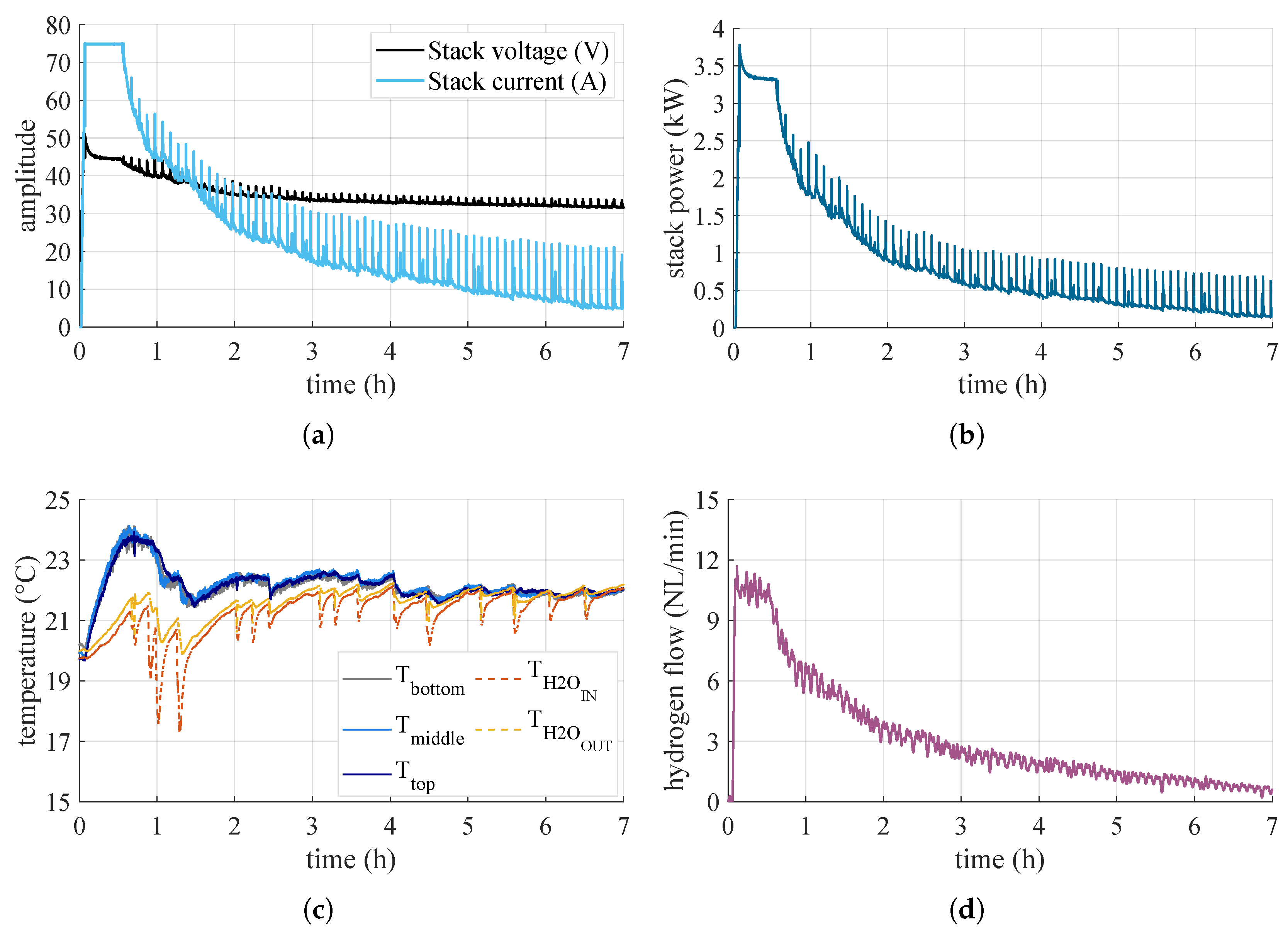
| Physical Quantity | Symbol | Measuring Range | Sensor Type | Sensor Used |
|---|---|---|---|---|
| H2 pressure | Pressure transducer | Impress Sensors and Systems IMP–1502 (Berkshire, UK) | ||
| H2 flow | Thermal mass flow meter | Bronkhorst F–112AC (Ruurlo, The Netherlands) | ||
| Ambient temperature | T–type thermocouple | TC | ||
| Heat exchanger water temperature | T–type thermocouple | TC | ||
| Canister temperature (top) | K–type thermocouple | TC | ||
| Canister temperature (middle) | K–type thermocouple | TC | ||
| Canister temperature (bottom) | K–type thermocouple | TC | ||
| Stack voltage | Differential voltage probe | Pico Technology TA041 | ||
| Stack current | DC/AC current probe | Teledyne T3CP100–2 (Chestnut Ridge, NY, USA) | ||
| Grid voltage | E | Differential voltage probe | Pico Technology TA041 (Cambridgeshire, UK) | |
| Grid current | i | DC/AC current probe | Teledyne T3CP100–2 (Chestnut Ridge, NY, USA) |
| Cooling Type | Hydrogen Stored (g) | Energy Efficiency |
|---|---|---|
| Air | 59.3 | 0.4037 |
| Water | 118.2 | 0.4113 |
Disclaimer/Publisher’s Note: The statements, opinions and data contained in all publications are solely those of the individual author(s) and contributor(s) and not of MDPI and/or the editor(s). MDPI and/or the editor(s) disclaim responsibility for any injury to people or property resulting from any ideas, methods, instructions or products referred to in the content. |
© 2025 by the authors. Licensee MDPI, Basel, Switzerland. This article is an open access article distributed under the terms and conditions of the Creative Commons Attribution (CC BY) license (https://creativecommons.org/licenses/by/4.0/).
Share and Cite
Pilati, P.; Ferrari, F.; Alleori, R.; Falcetelli, F.; Ancona, M.A.; Melino, F.; Bianchi, M.; Ricco, M. Experimental Analysis on a Commercial Power Electronic Converter in Power-to-Hydrogen System Based on PEM Electrolysis and Metal Hydrides. Energies 2025, 18, 2831. https://doi.org/10.3390/en18112831
Pilati P, Ferrari F, Alleori R, Falcetelli F, Ancona MA, Melino F, Bianchi M, Ricco M. Experimental Analysis on a Commercial Power Electronic Converter in Power-to-Hydrogen System Based on PEM Electrolysis and Metal Hydrides. Energies. 2025; 18(11):2831. https://doi.org/10.3390/en18112831
Chicago/Turabian StylePilati, Paolo, Federico Ferrari, Riccardo Alleori, Francesco Falcetelli, Maria Alessandra Ancona, Francesco Melino, Michele Bianchi, and Mattia Ricco. 2025. "Experimental Analysis on a Commercial Power Electronic Converter in Power-to-Hydrogen System Based on PEM Electrolysis and Metal Hydrides" Energies 18, no. 11: 2831. https://doi.org/10.3390/en18112831
APA StylePilati, P., Ferrari, F., Alleori, R., Falcetelli, F., Ancona, M. A., Melino, F., Bianchi, M., & Ricco, M. (2025). Experimental Analysis on a Commercial Power Electronic Converter in Power-to-Hydrogen System Based on PEM Electrolysis and Metal Hydrides. Energies, 18(11), 2831. https://doi.org/10.3390/en18112831









